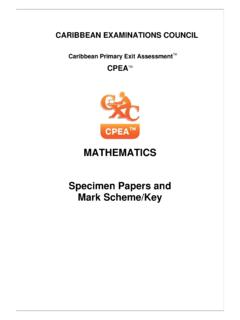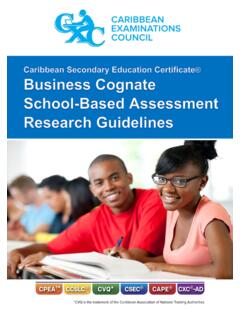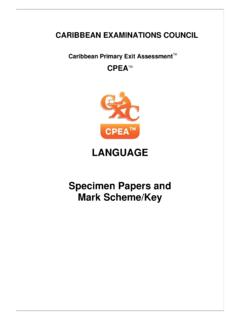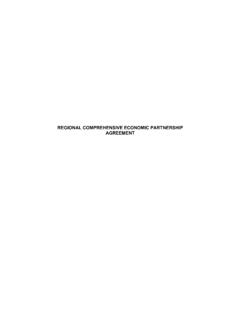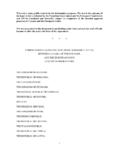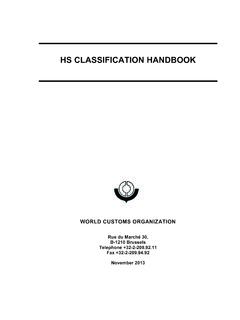Transcription of Caribbean Secondary Education Certificate Notes for ...
1 Caribbean Secondary Education Certificate Notes for English Teachers and Students MAU/SCD/001 MAU/SCD/001 Published by Caribbean Examinations Council 37 Arnold Road Kingston 5 Caenwood Complex JAMAICA Telephone Number: (876) 630-5200 Facsimile Number: (876) 967-4972 E-mail Address: Website: 2017 Caribbean Examinations Council Prince Road, Pine Plantation Road, St Michael BB11091 MAU/SCD/001 Table of Contents INTRODUCTION .. i FREQUENTLY ASKED QUESTIONS (FAQs) .. 2 1. What is the English SBA Portfolio? .. 2 2. What constitutes the group activity of the SBA? .. 2 3. What is investigation ? .. 3 4. What does research involve? .. 3 5. What is meant by outcomes of research ? .. 4 6. What is Reflection? .. 4 7. What is discuss the use of language ? .. 4 8. What does analysis of material involve? .. 4 9. What is the Written Report ?
2 5 10. What is included in the Plan for Oral Presentation ? .. 5 11. What does Oral Presentation entail? .. 5 12. Should the Oral Presentation be recorded? .. 5 13. What is participation measure ? .. 5 GRAPHICAL REPRESENTATION OF THE ENGLISH SBA PROCESS .. 6 THE ROLE OF THE STUDENT IN MANAGING SCHOOL-BASED ASSESSMENT .. 11 MANAGING SMALL GROUP ACTIVITIES .. 13 MANAGING LARGE GROUPS ACTIVITIES .. 14 GUIDANCE TO THE STUDENT FOR THE WRITTEN REPORT .. 14 GUIDANCE TO THE STUDENT FOR THE ORAL PRESENTATION .. 15 MAU/SCD/001 i INTRODUCTION School-Based Assessment is an integral part of student assessment in the course covered by this Syllabus. It is intended to assist students in acquiring certain knowledge, skills and attitudes that are associated with the subject. The activities for the School-Based Assessment are linked to the Syllabus and should form part of the learning activities to enable the student to achieve the objectives of the Syllabus.
3 This document provides information that can be used to guide the completion of the CSEC English SBA. This includes Frequently Asked Questions (FAQs), a graphical representation of the CSEC English SBA process and some general guidelines for managing the roles performed by the teacher and the students in completing the SBA. MAU/SCD/001 1 preamble Communication is generally taken to be the process of sharing information, thoughts and feelings between people through language that is spoken or written, and when it is convenient shown in attitude, movement, gesture and the other elements which make up body language. There are increased demands to do better in the way we communicate, an intensifying of the concept of communication so it becomes effective communication . This concept requires that transmitted content is received and understood by the audience(s) in the way it was intended.
4 CSEC English A and B examinations have followed the traditional standards of language and testing, but we are required to go further, wider to recognise and address: the new demands and implications in the word, the new genres and media which package and transmit the word, and instant effects of transmittal. There is still the strong need for individuals to hone their communication skills, but the corporate world (the world of work) suggests that collaboration is an essential norm. Classroom situations in which students were encouraged or at least allowed to proceed in the way someone else prescribed is no longer the smart behaviour. The demand is that students develop strong critical and problem-solving skills and expanded facility in coding and decoding the language. The English SBA prompts and allows candidates to see and use wider, yet more accessible arena from which to gather knowledge and expertise.
5 They are encouraged to find material (that is, thought-provoking content) in other forms besides the familiar novel or play or poem, so as to allow them to discover sources and content which appeal to them. Material can be drawn from many sources: magazines, newspapers, the Internet, videos, songs, the content of spoken-word performances, religious sources, printed or audio. The SBA is not a Social Studies project, but a personally motivated exploration into aspects of our individual or social lives. The students exploration and discovery, discussion and critical thought culminate in two ways: (1) a report on the plans, strategies and experiences: ( processes, procedures and outcomes ) shared by the group as they explored and discussed, and (2) the individual s prepared oral response/reaction to the topic explored. The response will be presented in a genre which the individual chooses as best suited to ensure effective communication.
6 (A glossary of terms used in describing the SBA tasks and content is included here.) MAU/SCD/001 2 Caribbean EXAMINATIONS COUNCIL CSEC ENGLISH SCHOOL-BASED ASSESSMENT FREQUENTLY ASKED QUESTIONS (FAQs) 1. What is the English SBA Portfolio? The English SBA portfolio is a collection of each student s work on the investigation of the issue selected by the group. It contains evidence of the candidate s planning of the investigation, interacting with and reflecting on stimuli (pieces of material) and writing a report. It should include: (a) the stimuli (pieces of material) which the student selected and with which he/she has interacted; (b) three Reflection entries written by student; (c) a copy of the Final Written Group Report; (d) plan of investigation; (e) plan for Oral Presentation; and, (f) copy of the scoring rubric for individual participation (see page 51 of the Syllabus).
7 2. What constitutes the group activity of the SBA? Although all students have individual tasks, they also have group tasks/responsibilities. With the teacher s guidance, through discussion (brainstorming), students will generate ideas about possible themes/areas of interest. As part of a group (4 5 students), they will: (a) select a theme for the group; (b) select a leader to better manage the process; (c) discuss possible selections of stimuli (pieces of materials) among group members. Group members will take personal pieces of material to the group for discussion to determine suitability; and, (d) assist group members in structuring the Plan of Investigation (helping group members to focus on their area) see page 29 of Syllabus. MAU/SCD/001 3 Outcome of the group activity (a) For the group report, the group agrees on at least three pieces of material selected from the general pool used for individual reflection.
8 At least one piece of material must be in print. (b) In the written report, it is shown how the various procedures/processes (activities) are used to select at least three final pieces of material. Include the selected pieces of material in the written report. (c) Develop a written report showing reasons for the selections of material (for example, shared features) and analysis (for example the connection of the material to the theme). 3. What is investigation ? The Investigation involves: (a) choosing the issue/topic/theme; (b) finding appropriate stimuli using the strategies outlined in item 4 below; and, (c) checking the stimulus for bias. 4. What does research involve? The research involves adding to the knowledge (what you know already) through discovery by: (a) using a search engine; (b) reading; (c) listening; (d) observing; (e) discussing ideas (brainstorming); (f) asking questions; and, (g) collecting information connected to your issue/topic/theme.
9 These activities help the student to find and evaluate appropriate information which adds to their understanding of the theme. MAU/SCD/001 4 5. What is meant by outcomes of research ? The outcomes of the research is a report on the new knowledge gained about the theme/the process/the group as members were involved in the research. Research in this context refers to the investigation in which candidates engaged. 6. What is Reflection? Writing the three Reflection entries means that the student, working individually: (a) chooses three pieces of material related to the theme, one of which must be print; (b) creates a first entry in which they record how each of the three stimuli affected their understanding of and reaction to the theme; (c) creates a second entry which they comment on the language techniques used, for example, figurative language, emotional language, descriptive language, denotative and connotative language, levels of formality, use of dialect, jargon; and, (See the glossary for further information on language used in visual stimuli) (d) creates a third entry which they comment on how the process of doing the English SBA on the selected theme has helped them to grow.
10 For example, increased understanding, competence, awareness, changes in behaviour, attitude, and world view. This last entry of the reflection should be delayed until close to the completion of the SBA. 7. What is discuss the use of language ? When students discuss the use of language found in their selected stimuli (pieces of material) they will comment on the techniques (word choice, figurative language) used by the writer to communicate his/her message. The discussion should include: (a) identification of techniques; and, (b) comments on how these techniques helped/hindered the delivery of the message (information). 8. What does analysis of material involve? When the group members choose a piece of material as stimulus they analyse it considering: (a) What does the stimulus (piece chosen) show/say about the theme? (b) What is appealing about the stimulus (piece chosen).
